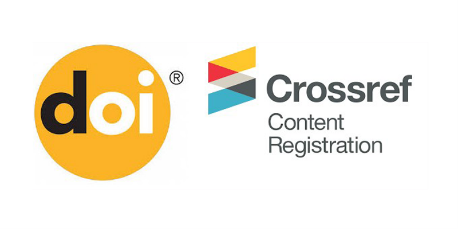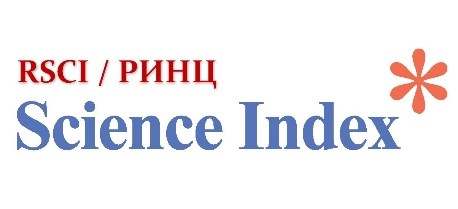Publication ethics
PUBLICATION ETHICS
Editorial policy of the journal "Bulletin of L.N. Gumilyov Eurasian National University. Mathematics, computer science, mechanics series" is guided by the traditional ethical principles of scientific periodicals, set out in the Guidelines on the principles of scientific publication ethics for journal editors of the Committee on Publication Ethics (Committee on Publication Ethics: COPE, Promoting integrity in scholarly research and its publication | COPE: Committee on Publication Ethics), containing the following requirements:
For authors:
Submitting articles to the Editorial office constitutes the authors' consent to the right of the Publisher, L.N. Gumilyov Eurasian National University, to publish articles (if approved) in the journal and to republish them in any foreign language. By sending the manuscript to the editorial office, the author(s) guarantee that they do not violate anyone's copyright. The authors grant the publisher of the journal, L.N. Gumilyov Eurasian National University, exclusive rights in perpetuity:
- the right to reproduce the article (to publish, duplicate, replicate or reproduce it otherwise) without limitation of the number of copies, and the right to distribute the work by any means. In this case, each copy of the work will contain the name of the author(s) of the article;
- the right to incorporate the article into a composite work;
- the right to disseminate the article to the public;
- the right to use the metadata (title, author's name, abstract, bibliographic materials, full text of the article, etc.) of the article through distribution and dissemination to the public, processing and systematization, and inclusion in various databases and information systems, including full-text versions of the published article;
- the authors agree that the territory in which the rights to the article are allowed to be used is unlimited;
- the author(s) also grant the right to journal publisher to store and process their personal data without time limitation (name, surname, patronymic, educational information, information about place of work and position held). Personal data is provided for their storage and processing in various databases and information systems, their inclusion in analytical and statistical reports, the creation of reasonable relationships between the objects of works of science, literature and art and personal data, etc.;
- the author(s) are fully liable for the unauthorized use of intellectual property, copyright objects in a scientific article in accordance with the current legislation of the Republic of Kazakhstan;
- the author(s) consent to have the manuscript checked for plagiarism by the journal publisher;
- the author(s) confirm that the manuscript to be submitted has not been published anywhere else (in the presentation language or in any other language), has not been submitted and will not be submitted for publication in other scientific journals;
- The author(s) is familiar with the publication ethics, editorial policy of the journal and the guidelines for authors.
Requirements for submitted articles.
The authors should check the compliance of their manuscript with all the following points:
- The submitted manuscript (in the language of submission or in any other language) has not been previously published, nor has it been submitted for review and publication in another journal;
- The manuscript is designed according to the requirements of the editorial board:
The scientific article is a complete study with a detailed formulation of the problem with a full justification of the need for a research goal in the context of the development of the direction and a clear formulation of the result obtained, separately or in combination contains the following information:
- The necessary designations and definitions to ensure understanding of the text of the article;
- Statement of the problem, the solution of which is devoted to the article;
- Historical information on the formulation of the problem with appropriate full references - by whom and when the results preceding the topic of the article were obtained;
- Substantiation of the necessity and relevance of the problem of the article as the most important part of any scientific work;
- The exact formulation and description of the solution of the problem presented in the article;
- Detailed justification of the novelty of the result(s) of the article in the context of the previously known;
- The solution of the problem must be provided with detailed justifications (evidence);
must not have been published or be under consideration by another editorial office at the time of submission,
- The manuscript contain the results of original research;
- The manuscript include only results of the author/author's team (no other persons can be included). It is assumed that at the time of sending the article all authors agree with the publication in the given journal and do not object to the order of the authors in the article;
- The manuscript contain in the citation list only those peer-reviewed sources that have been used in the course of the study;
- In the manuscript is indicated all the sources used (including the works of the author/author's team).
For reviewers:
- The journal uses a double-blind -review procedure to ensure the quality of published articles. Only the obtained research results should be the object of reviewing for the reviewer.
- Each manuscript received for review is treated as a confidential document. The reviewer may not use any materials contained in the submitted manuscript in his/her publication. The reviewer may forward the manuscript to third parties only with the permission of the Editor-in-Chief.
- The reviewer should provide the editorial office an objective assessment of the work and, if necessary, suggest options for improving the submitted manuscript.
- The reviewer is obliged to refuse to review the manuscript by notifying the editorial office if he is not an expert on the subject of the manuscript.
For editors:
The Editor-in-Chief and members of the Editorial Board undertake to:
- pay special attention to the quality of articles, always express their reasoned decision on the agreement (or disagreement) with the decisions of reviewers on the article,
- work to increase the geographical diversity of authors, and invite authors from different organizations and countries for publication,
- assess the intellectual content of manuscripts regardless of gender, nationality, religion, and other personal attributes of the author/authors,
- not consider manuscripts in the case of interests due to competitive, collaborative, and other interactions and relationships with authors and organizations associated with the manuscript.
Editor-in-Chief:
- identifies reviewers (scientists or specialists in the relevant field) for each received article that has passed the initial selection for compliance with technical requirements,
- to determine the content of the current issue, makes the final decision on the publication of the submitted manuscript based on the reviewers' feedback and discussion of the manuscript at the meeting of the Editorial Board.
Editorial Office:
The editorial office deals directly with the authors of articles and does not work with agencies to provide services to authors for the publication of their research results.
The editorial office is obliged to make decisions as soon as possible when unethical behavior of authors, editors and reviewers is detected. Unethical behavior of authors includes falsification of the composition of authors, publication of pseudoscientific texts, their falsification and fabrication, manipulation of citations, unauthorized borrowing (plagiarism), parallel submission of material to other publications.
If unethical behavior of the author(s) is detected in the process of reviewing a manuscript or its pre-printing preparation, the editorial office has the right to withdraw the manuscript from further review and terminate cooperation with the author. In the case of unethical behavior of the author after the publication of his/her article (detection of parallel publication, copyright violation, plagiarism, etc.) the editorial office has the right to decide to retract the article from the journal site and from the archive and scientific indexing databases, notifying other journals (in which the article has been published in the same period) about the unethical behavior of the author(s). The editorial office undertakes not to make unjustified decisions to cancel the publication (retraction), unless significant problems are found in connection with their publication (unethical behavior of the author, errors, etc.).
The unethical behavior of the reviewers and editors of a journal includes the submission of texts of articles to other journals without the agreement of the authors, the submission of articles by authors to third parties, the violation of copyright, the principle of confidentiality of editorial processes, and the support of articles due to interests due to competitive, collaborative, and other interactions and relationships with authors and organizations associated with a manuscript.
In the case of complaints concerning reviewed manuscripts or published material, the editorial office undertakes to respond adequately: first, the author of the article is asked for clarification. An investigation is carried out only in the case of an unsatisfactory response from the author.
Potential situations of ethical behavior violations of authors, editors and reviewers not mentioned above will be resolved on the basis of the Committee on Publication Ethics (Committeeon Publication Ethics: COPE, Promoting integrity in scholarly research and its publication | COPE: Committee on Publication Ethics).
The editorial office makes it possible for the Editor-in-Chief, members of the Editorial Board and the Editorial Council and reviewers to publish articles in the journal, but they are not allowed to use their privileges. All articles, including articles of responsible editors of special issues, also undergo a reviewing procedure and are considered at the meeting of the Editorial Board of the journal.
In case of errors (typos in formulas, in indicators for technical reasons) in published articles, information about corrections may be posted in subsequent issues.
In the case of detection of errors (misprints in formulas, in indicators due to technical reasons) in published articles, information about the corrections can be placed in subsequent issues.







